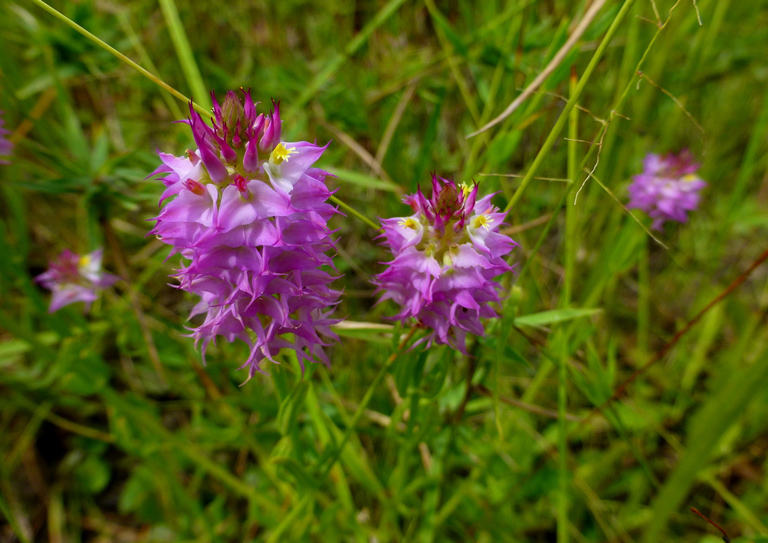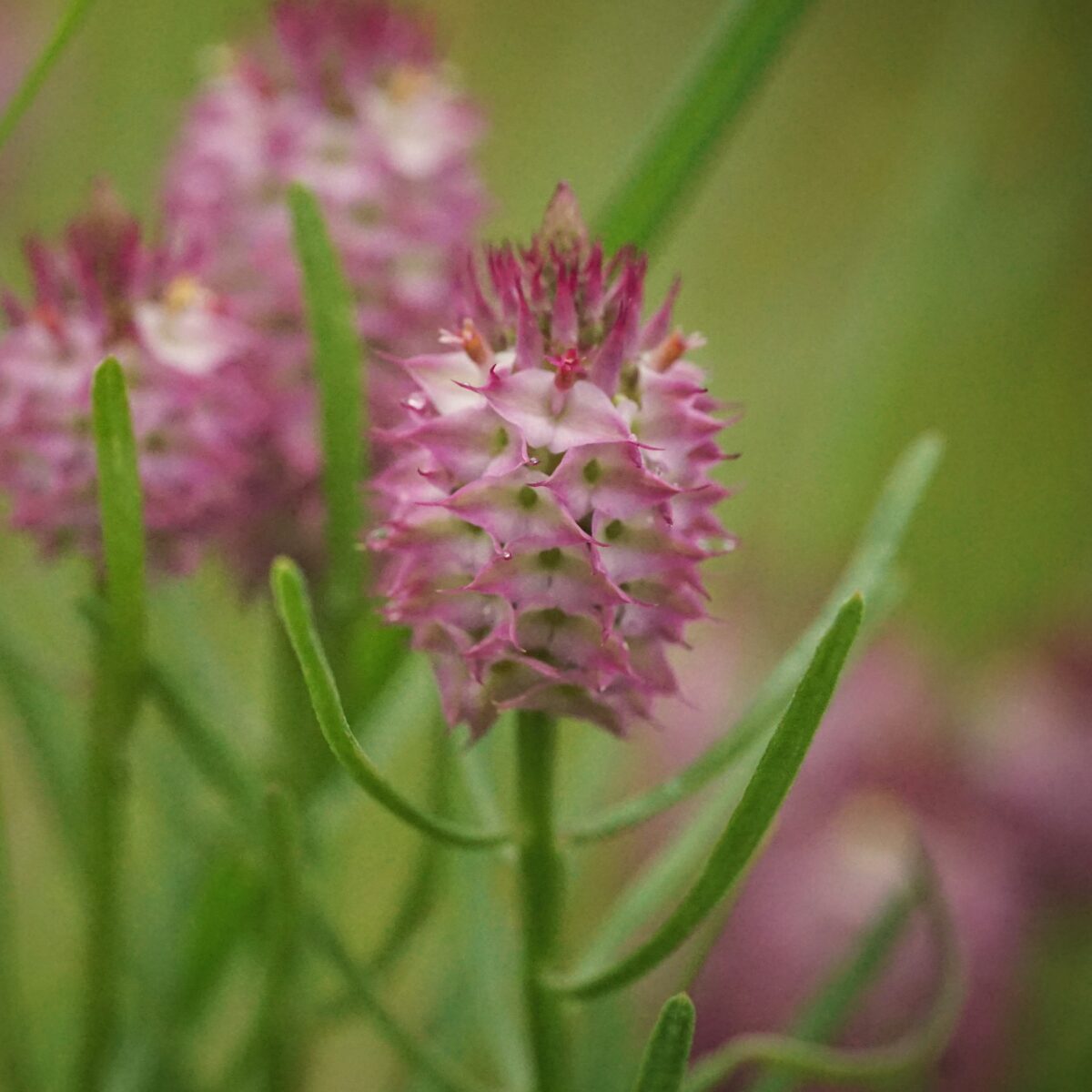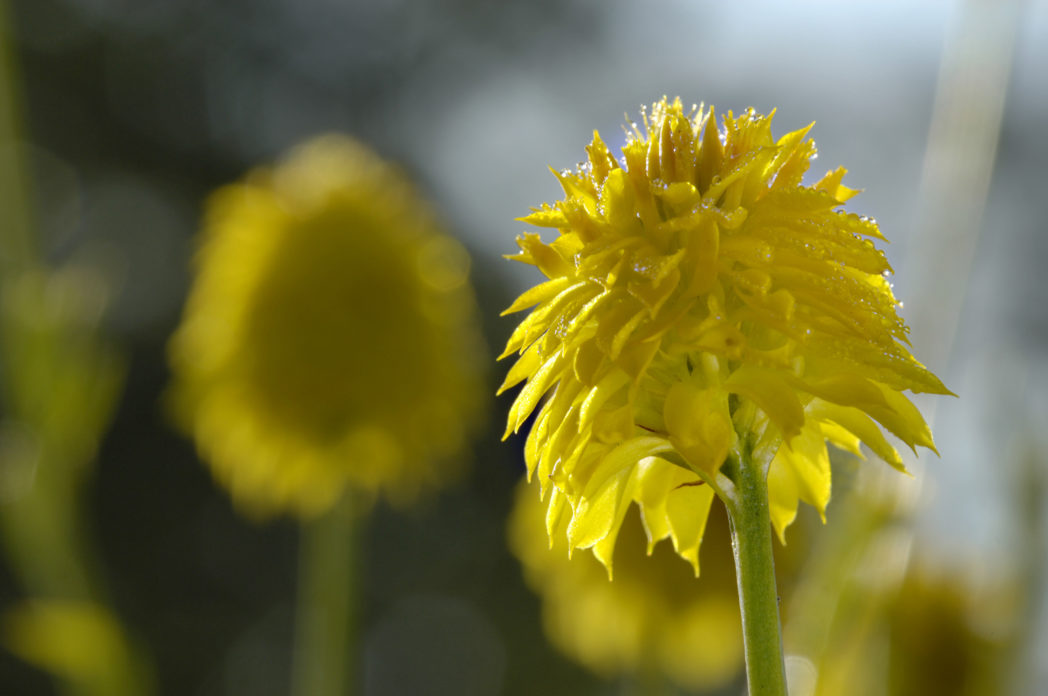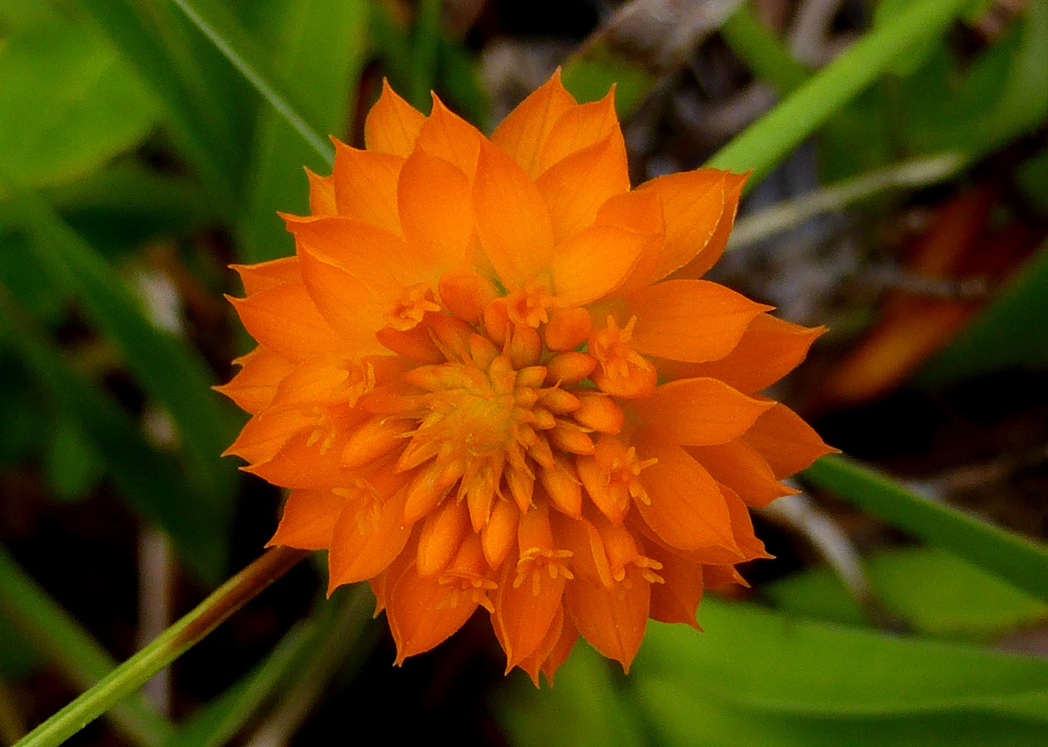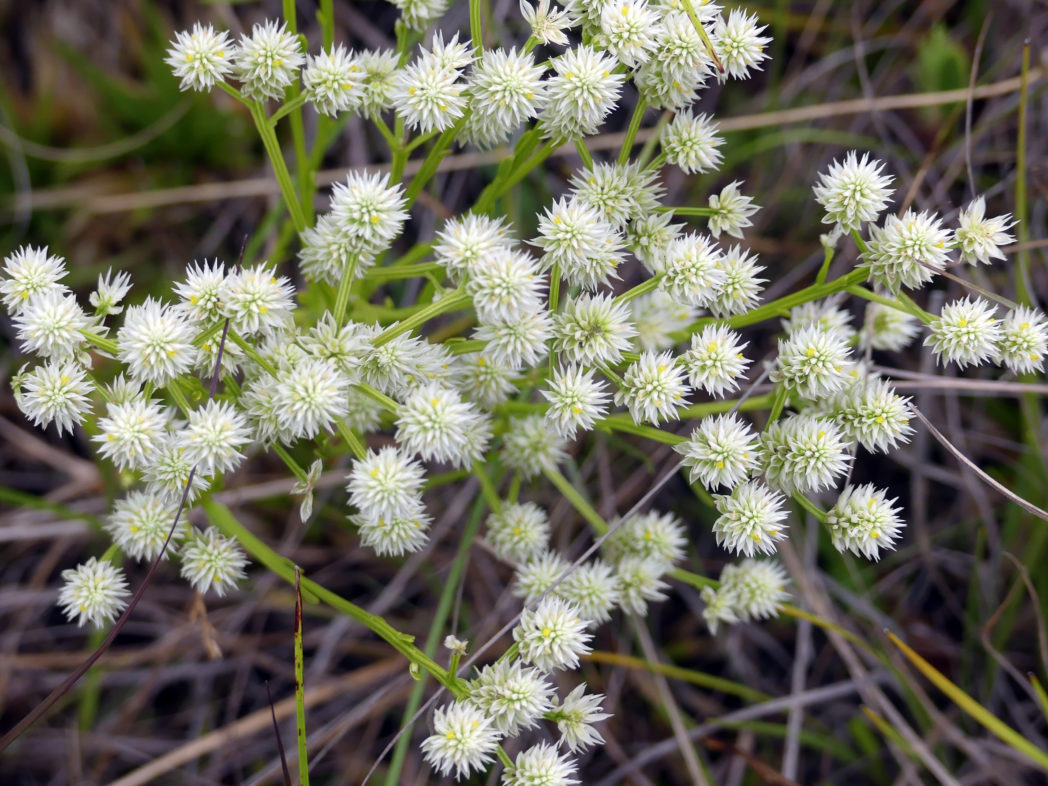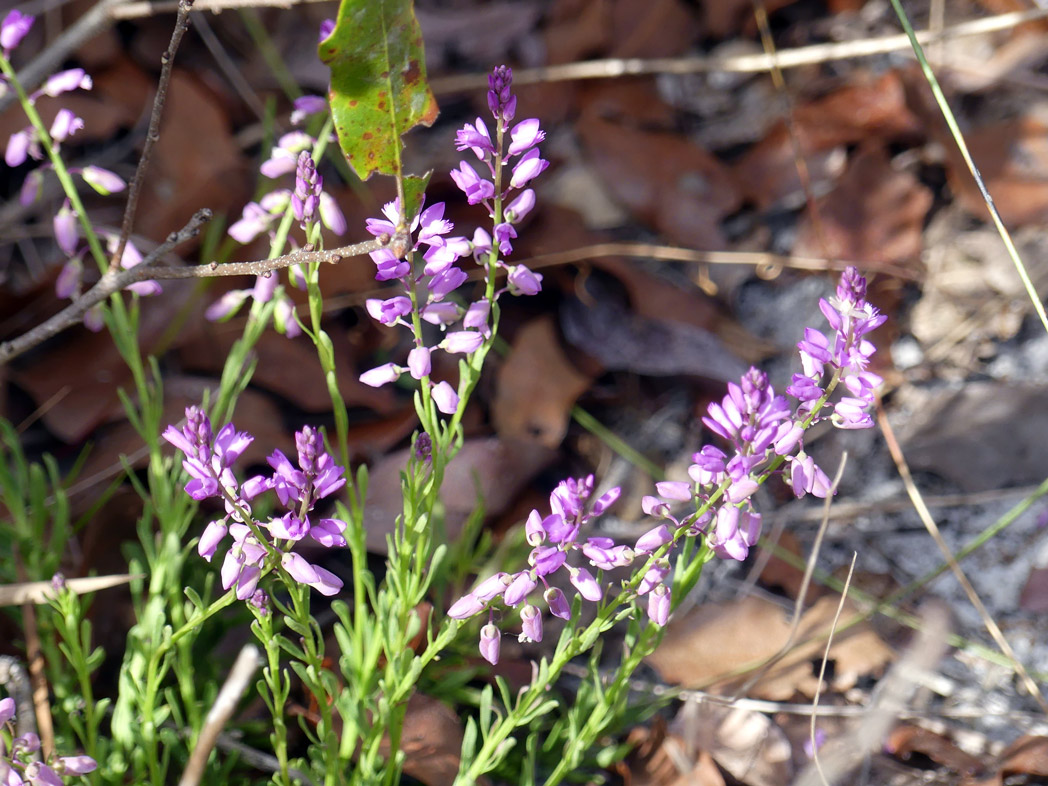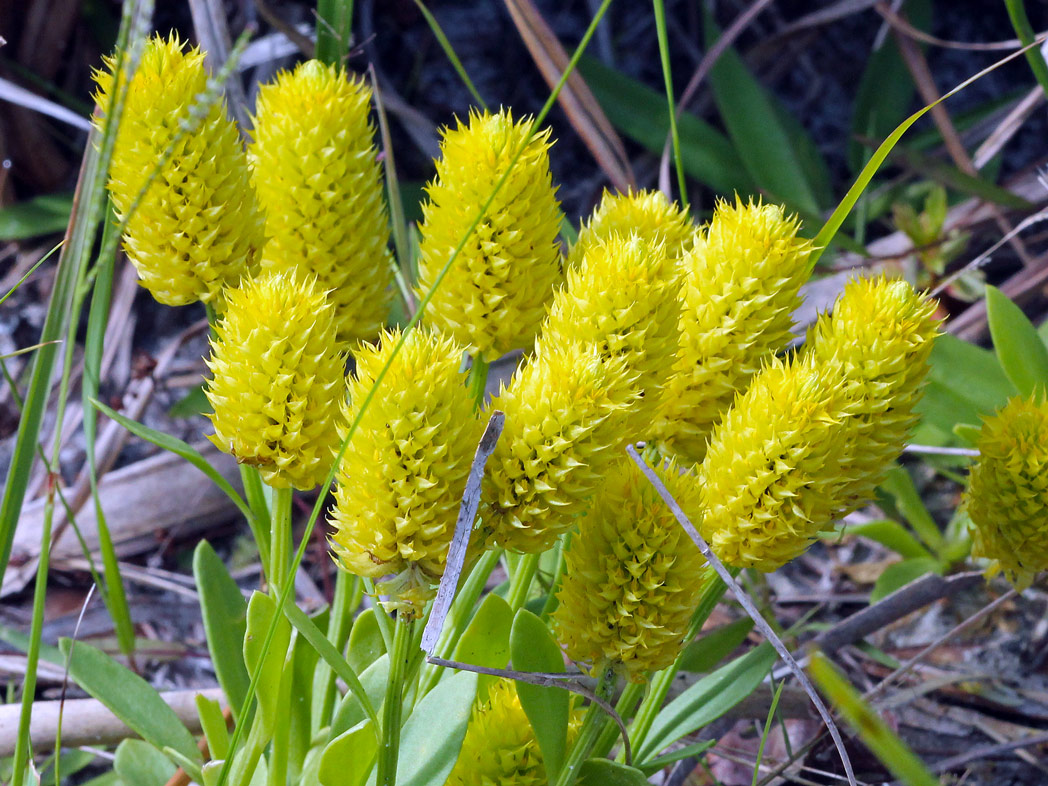Drumheads
Pictured above: Drumheads (Senega cruciata) by Eleanor Dietrich. Click on terms for botanical definitions. View post as a PDF.
Drumheads (Senega cruciata) is a low-growing wildflower that blooms from late spring through fall. Its flowers are tiny, yellowish-white and tubular. They are surrounded by large, showy pink bracts that are easily mistaken as the flower’s petals. The inflorescence develops as a cylindrical cluster at the terminal end of the flower stalk. Leaves are short, linear and arranged in whorls of four.
Drumheads occur naturally throughout most of Florida in wet pinelands, savannas and other open wetland habitats, as well as along marsh edges. Although the flowerheads are conspicuous, the plant is easy to overlook as it is often obscured by the grasses and other forbs that grow with it.
The species epithet, cruciata, means “cross-shaped,” hence the plant’s other common names, cross milkwort, cross-leaf milkwort and cross-leaf drumheads.
NOTE: Research published in 2023 assigned the New World clade of Polygala to the genus Senega (Pastore et al). This species was previously known as Polygala cruciata and is likely still listed as such in many online and print resources.
Family: Polygalaceae (Milkwort family)
Native range: Nearly throughout Florida
To see where natural populations of Drumheads have been vouchered, visit florida.plantatlas.usf.edu.
Lifespan: Annual
Soil: Moist to inundated soils
Exposure: Full sun
Growth habit: 4–12”
Drumheads are not commercially available. Visit a natural area to see them.
For information on other Polygala species, see these resources:

